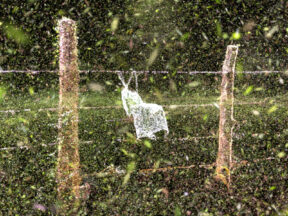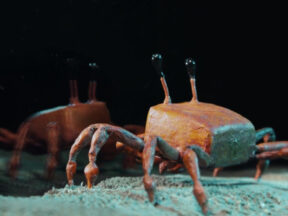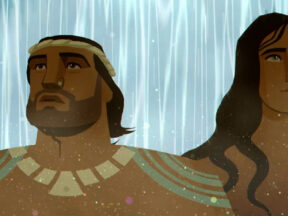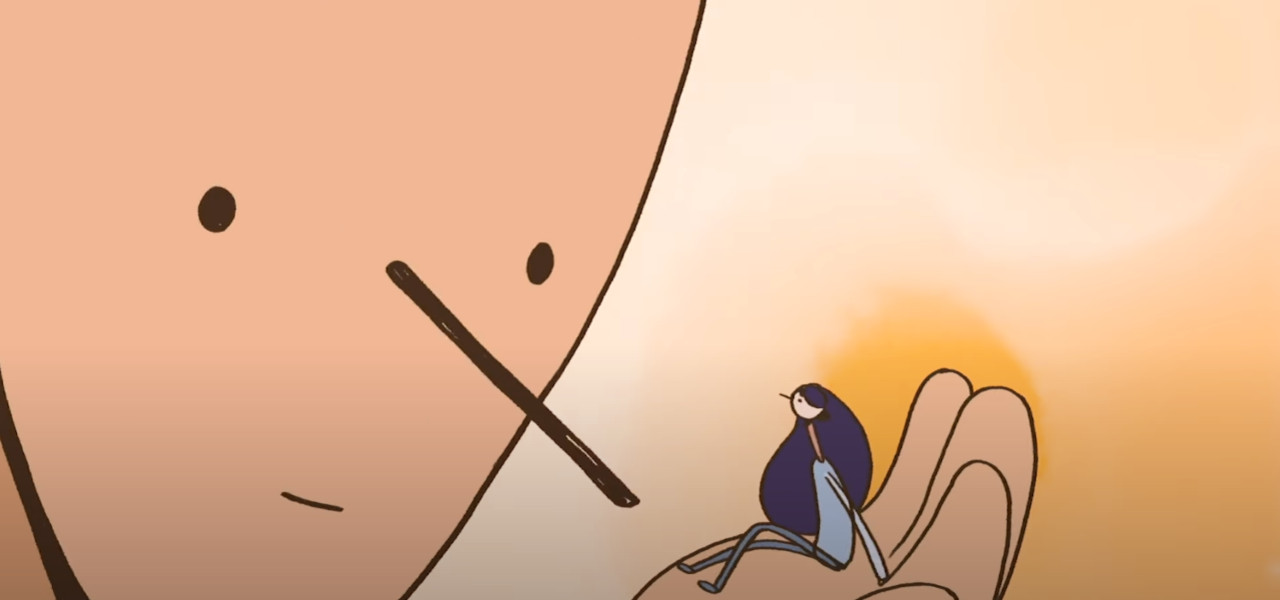
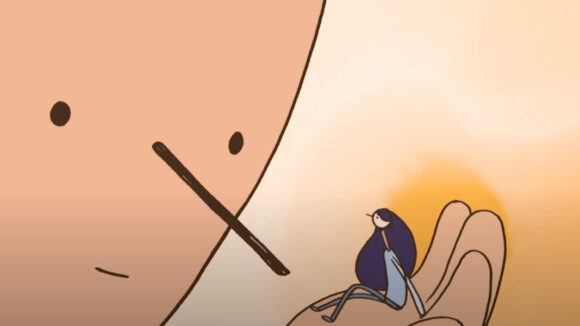
2024 Oscars Short Film Contenders: ‘Worry World’ Director Jessica Patterson
Welcome to Cartoon Brew’s series of spotlights focusing on the animated shorts that have qualified for the 2024 Oscars. There are several ways a film can earn eligibility. With these profiles, we’ll be focusing on films that have done so by winning an Oscar-qualifying award at an Oscar-qualifying festival.
Today’s film is the Irish short Worry World from director Jessica Patterson. The film earned its Oscars qualification by winning the James Horgan Award for best animated short at the Galway Film Fleadh.
In the film, a young factory worker dreams in color of escaping her black-and-white world, where everyone’s thoughts are on display and thinking in color is forbidden. After a serendipitous meeting with another free thinker, she and her new like-minded companion contemplate escaping their oppressive surroundings together.
Cartoon Brew: Corporate dystopias have been popular in media for several decades. What did you do to ensure that your world would feel unique?
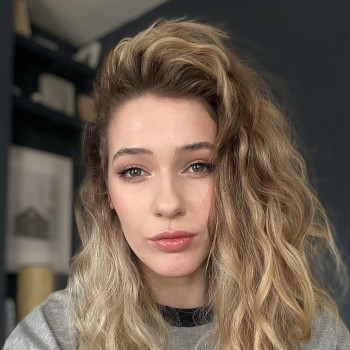
Jessica Patterson: We decided against going down a traditionally sci-fi or particularly dark, dystopian route. We didn’t want the world of the film to feel too far from reality, so instead, we based it on what we knew. Hugh O’Conor had built a very in-depth sense of the world into his script, and from there, I began to explore the visual setting, which was very much inspired by my time spent in Belfast, Northern Ireland. Belfast has this wonderful mix of traditional and industrial; Georgian architecture next to Modernist next to towering ship-building cranes and tall factory chimneys further along the coast in Larne. Physical examples of past societal division can still be seen dotted about the city, long stretches of dividing walls and gates that close between communities. In the 1960s and 1970s, it was normal to queue to enter and exit the city center. What really stuck with me was that, despite this, people just got on with life. It felt like the right fit for a story about finding connections in a disconnected world.
What was it about this story or concept that connected with you and compelled you to direct the film?
Worry World was written by Hugh, whose work as an actor and director I was very familiar with, so when he got in touch about a script for an animated short, I was excited to take a look. His idea of a world where all thought is visible caught my imagination straight away, but as a person who would often internalize their thoughts, as I’m sure many people do, the concept of a world where this would be impossible certainly struck a chord. It got me thinking about how we manage dealing with our own heads, what we think about when we’re not necessarily aware or conscious of our thoughts, and how much would I pay for the ability to turn mine off if this world existed. It also struck me that, in a way, we’re not too far from this idea as a society already. Many of us habitually share our every thought across multiple social media platforms daily, so little windows above our heads seemed like a not-so-far-off concept I was excited to explore further.
What did you learn through the experience of making this film, either production-wise, filmmaking-wise, creatively, or about the subject matter?
I found it to be the most intense experience of having to ‘kill your darlings.’ With the scope of the world and potential for ideas behind the root of our story, “What if everyone could see your thoughts,” we could have gone any number of ways with the depth of Hugh’s script. We explored so many different ideas, sequences, styles, and additional characters; it could have been a 30-minute special at one point, but we realized we needed to pull it back and simplify the concept right down to what we really cared about and wanted to show. We had such a strong base in our producer Shauna Cullen, who grounded us when we began to over-think and kept the team energized and moving throughout a production that spanned two lockdowns; a difficult task at the best of times but certainly on theme if we’re talking disconnection and dystopia.
Can you describe how you developed your visual approach to the film? Why did you settle on this style/technique?
We knew quite early on that we didn’t want the visuals to compete with the potential scale of the concept. There was so much going on within the narrative and the world of the short that I felt if we over-complicated the design, particularly for the characters, an audience may drift from the heart of the story.
We knew we would need to visually separate ‘thought’ from ‘reality’ to allow our characters or the camera to transition in and out in a readable way throughout the story. With this in mind, we assigned structured colorless linework to ‘reality’, allowing for full color, pencil texture, and a lack of linework to represent the fluidity of ‘thought.’
When looking at our characters, the overarching theme of disconnection led us to explore minimal, intentionally incomplete line work, constantly boiling and uncertain. The idea of capturing a feeling or expression through the least number of lines also appealed to me as an artist, and to this end, I drew a lot of inspiration from the work of cartoonist and author Liana Finck, how she approaches ‘big,’ human topics through the most minimal but gestural illustrations.

